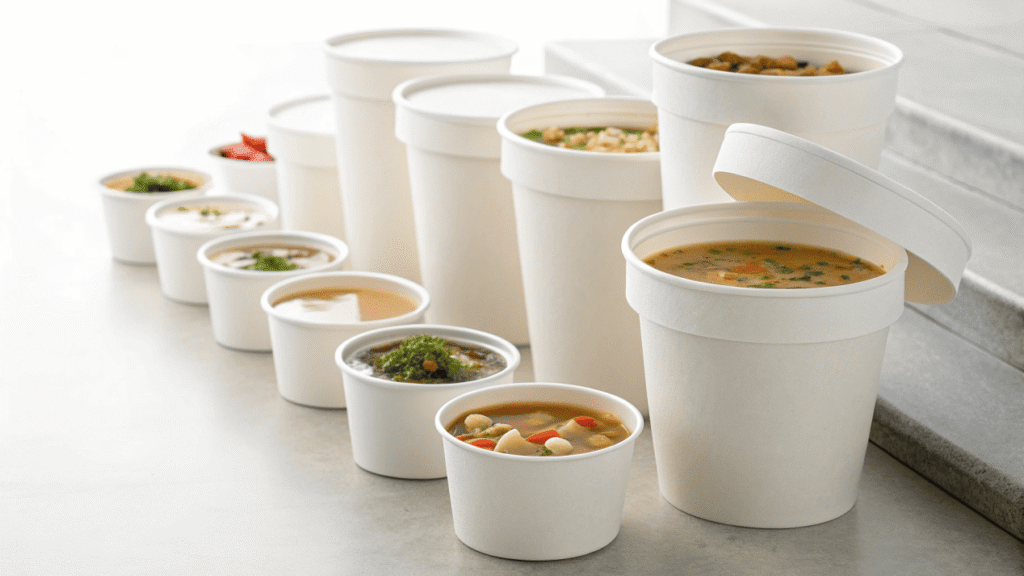Spilled soup ruins meals and your restaurant's reputation. A cheap container can lead to angry customers and bad online reviews. The right container protects your food and your brand.
The best disposable soup container has a secure, leak-proof lid, often with a vent for hot foods. It must be made from a durable, food-safe material like PP plastic or lined paperboard and come in various sizes to meet customer needs.
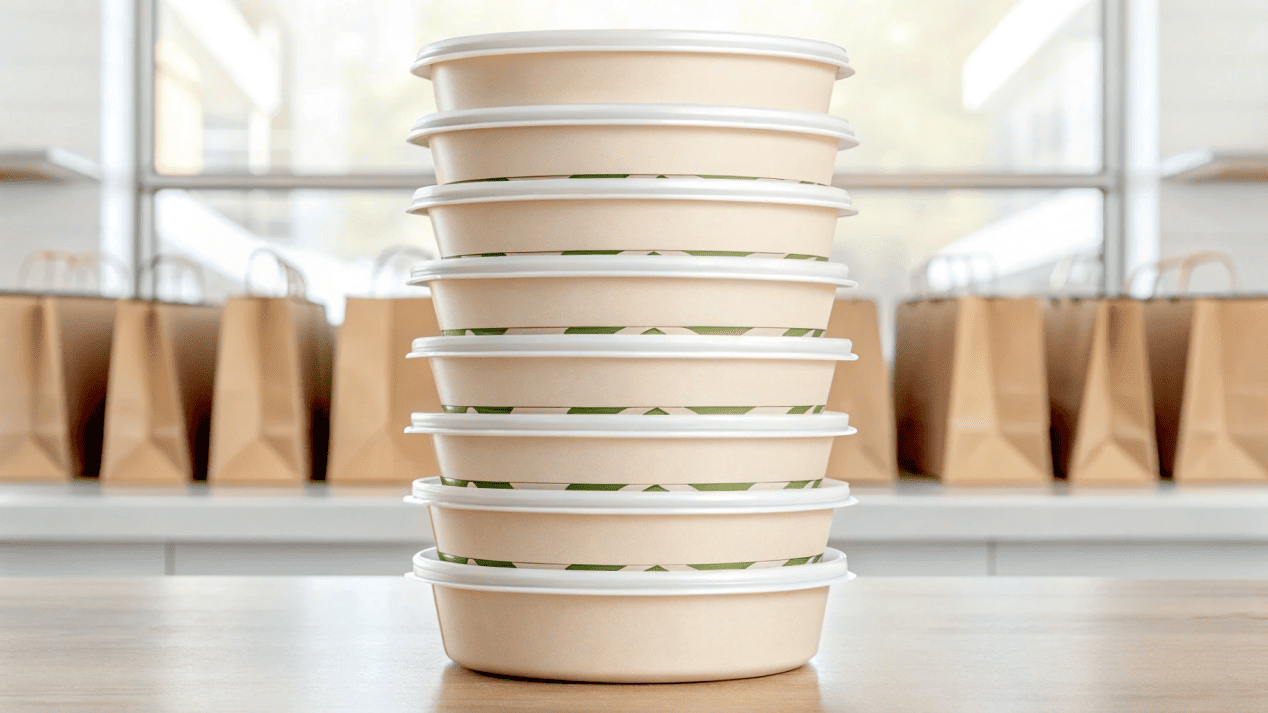
A spilled soup is more than a mess; it's a failed promise to your customer. They trusted you to deliver a hot, delicious meal, and instead, they got a bag full of lukewarm liquid and a stained car seat. As an engineer in this industry for over 15 years, I've seen how this small packaging detail can make or break a takeout business. The container isn't just a container; it's the final step in your quality control process. Let’s break down the essential factors you must consider to make the right choice.
Why is a Leak-Proof Design the #1 Priority?
A small soup leak can become a huge problem. It stains a customer's car seat and ruins their meal, leading to terrible online reviews. A secure, leak-proof design is essential.
A leak-proof design relies on a tight-fitting, secure lid that snaps or twists shut. For hot soups, a vented lid is crucial to release steam pressure and prevent the lid from popping off during transport.
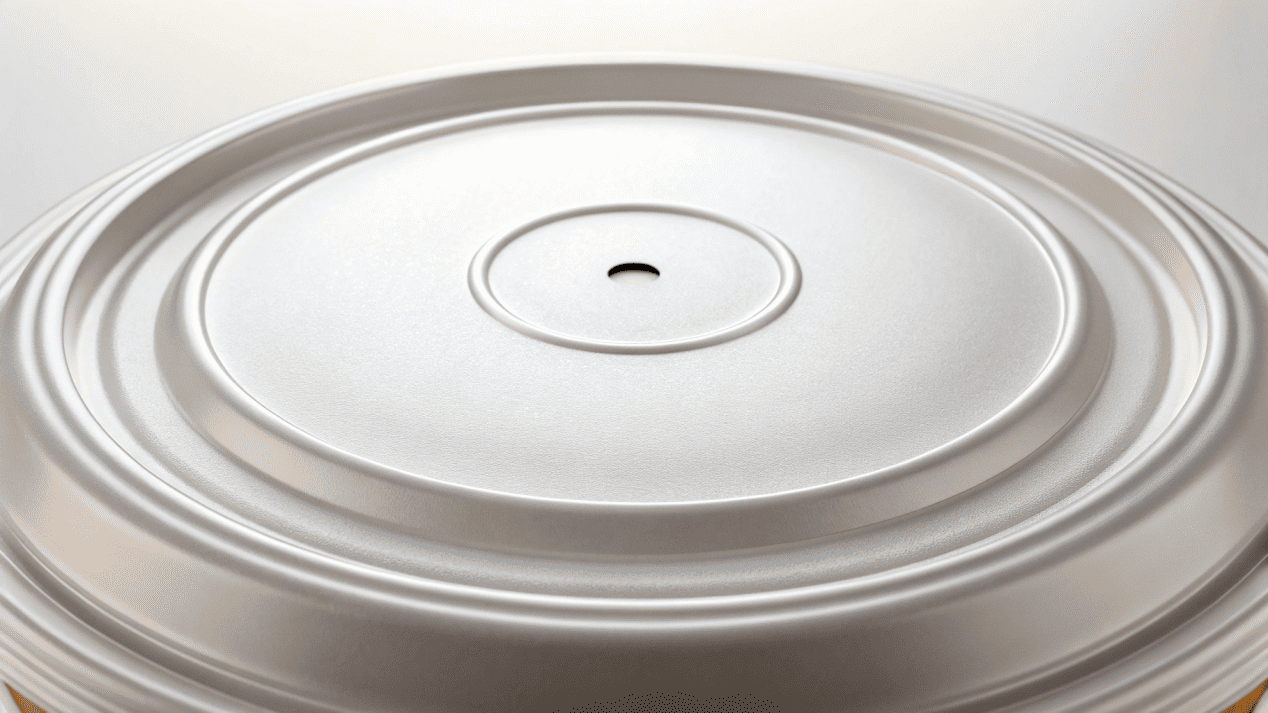
From an engineering standpoint, the seal between the container and the lid is the most critical point of failure. If you get this wrong, nothing else matters. The entire system must be designed to withstand heat, movement, and pressure changes during delivery.
The Lid is Everything
The most common and effective lids are those that snap on with a firm, audible "click." This confirms a secure seal has been made. The rim of the container and the groove of the lid must be perfectly matched to create this seal. A poorly manufactured container will have inconsistencies in the rim, leading to micro-gaps where liquid can escape. This is a common issue with the cheapest options on the market.
The Importance of a Vent
Hot soup releases steam. In a completely sealed container, this steam builds up pressure. A simple bump on the road can be enough for that pressure to pop the lid off, causing a major spill. A small vent in the lid allows this steam to escape safely, equalizing the pressure and keeping the lid securely in place. It's a tiny feature that prevents catastrophic failures.
How Do You Choose the Right Range of Container Sizes?
Only offering one soup size limits your sales. You lose customers who just want a small side or a kid's portion. A smart range of sizes meets every need and boosts your revenue.
Choose a range including 8 oz for sides, 12-16 oz for standard meals, and 24-32 oz for large or family portions. Using one lid size for multiple container bases simplifies inventory and streamlines operations.
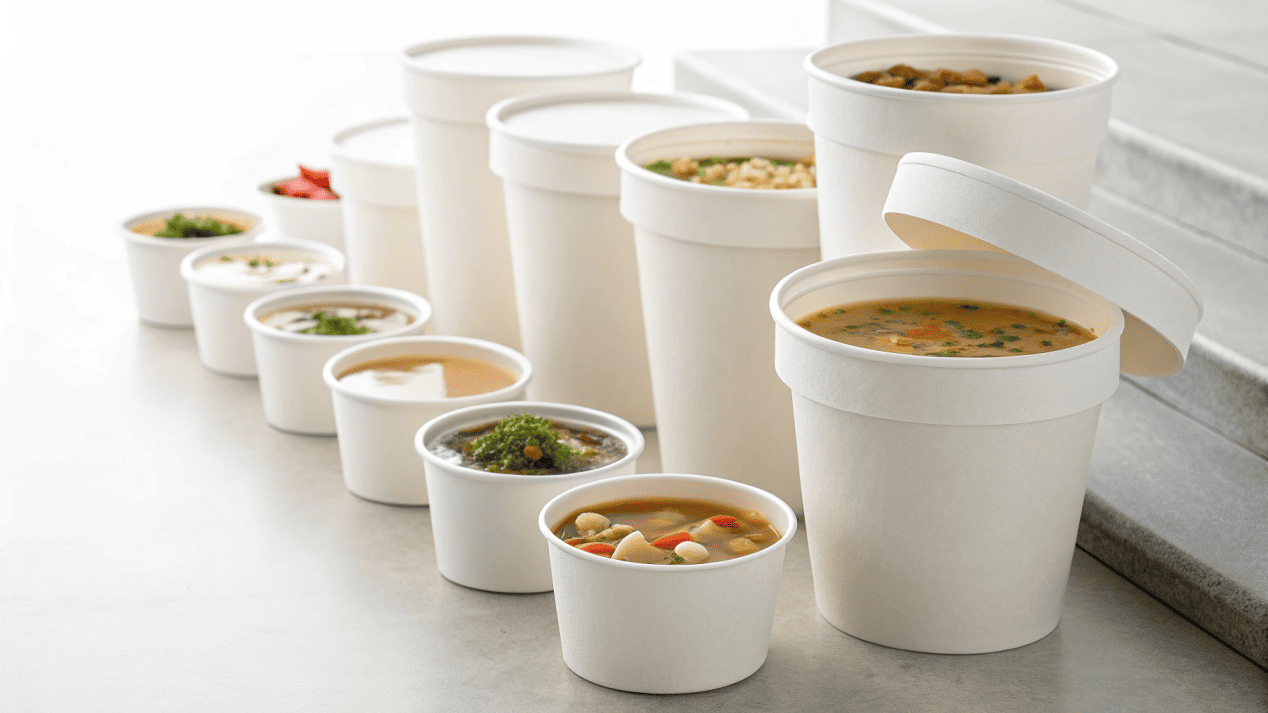
Offering the right sizes is not just about customer choice; it's also about operational efficiency and profitability. A strategic size range allows for upselling and simplifies your staff's workflow.
Covering the Core Appetites
You need to cater to different eating occasions. An 8 oz container is perfect for a side of soup with a sandwich. The 12 oz and 16 oz sizes are the industry standard for a lunch-sized portion. The larger 24 oz or 32 oz sizes are great for hearty meal portions or for a customer picking up soup for their family. This range covers nearly all potential customer needs.
The Efficiency of a Common Lid System
Many manufacturers, including us at Haokelao, design container systems where one lid size fits multiple bases. For example, one lid might fit the 12 oz, 16 oz, and 24 oz containers. This is a huge advantage for your business. It reduces the number of inventory items you need to stock, simplifies ordering, and makes it faster and easier for your busy staff to grab the right lid during a rush.
| Size | Common Use | Customer Profile |
|---|---|---|
| 8 oz | Side order, Kids' meal | Lunch combo customers, Families |
| 12-16 oz | Standard single serving | Individual lunch/dinner orders |
| 24-32 oz | Large meal, Family size | Customers seeking value, Families |
What Material is Best and Safest for Hot Soups?
Customers are worried about putting hot soup in plastic. Using the wrong material can be unsafe or even melt, creating a terrible experience. Choosing certified food-safe materials builds trust.
For hot soups, Polypropylene (PP) plastic is ideal as it is microwave-safe, durable, and BPA-free. Lined paperboard is another great option for heat retention. Eco-friendly choices include compostable bagasse (sugarcane).
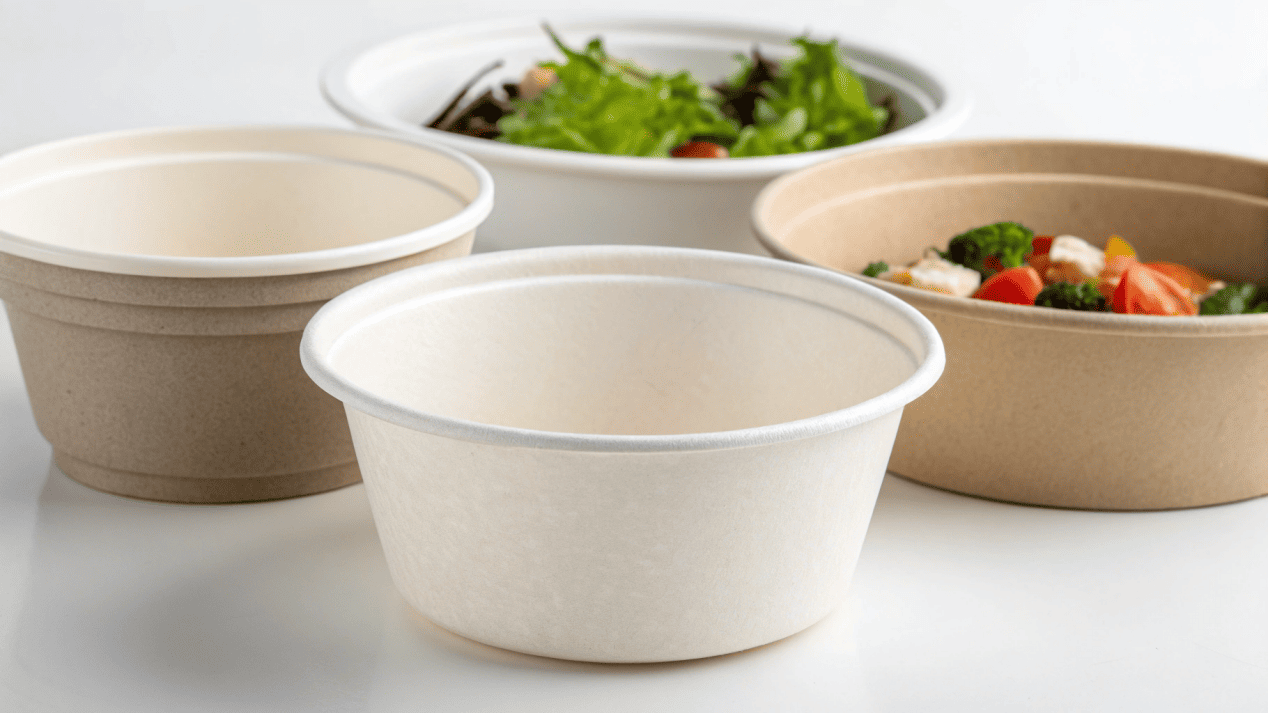
The material you choose affects everything from safety and heat retention to your brand's image. Each has its specific strengths, and I help my clients choose the one that best fits their food and their brand's values.
The Industry Standard: Polypropylene (PP) Plastic
This is the workhorse of the takeout soup industry for a reason. PP plastic is a strong, durable material that can handle very high temperatures without losing its shape or leaching harmful chemicals. Always look for containers labeled as "BPA-Free" to guarantee safety. Another major advantage is that it is microwave-safe, which is a huge convenience for customers who want to reheat their leftovers.
The Sustainable Option: Paperboard & Bagasse
Paperboard containers provide excellent heat insulation, keeping soup hotter for longer. They are lined with a very thin layer of PE plastic or a compostable PLA lining to be leak-proof. For businesses focused on sustainability, containers made from bagasse (sugarcane fiber) are a fantastic choice. They are strong, certified compostable, and send a powerful message about your brand's commitment to the environment.
How Do You Balance Quality and Cost for Soup Containers?
Saving money on packaging seems smart. But the cheapest containers often leak, costing you in refunds, wasted food, and lost customers. A smart cost analysis prevents this.
Balance cost by buying in wholesale to lower the per-unit price. While premium eco-friendly materials cost more upfront, a reliable, slightly more expensive container often saves money by preventing spills and protecting your brand.
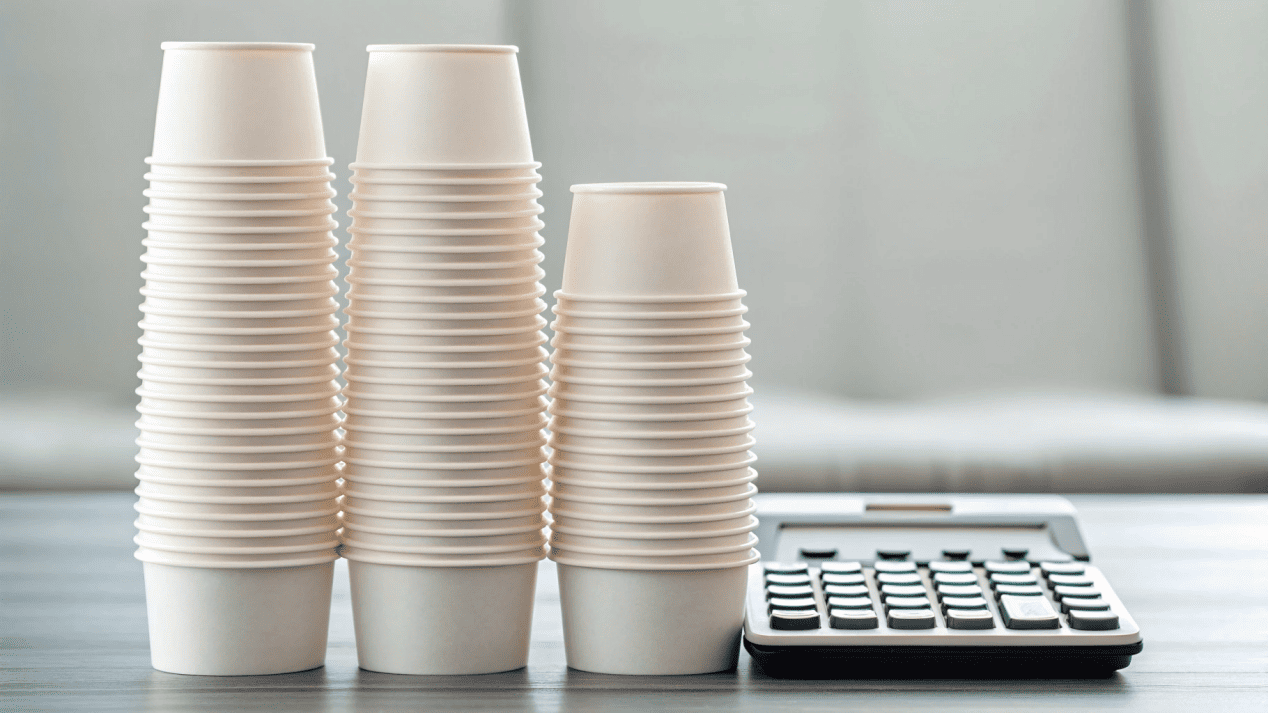
As a manufacturer, I understand the importance of managing costs. But I always advise my clients to look at the "total cost of ownership," not just the per-unit price of a container. A cheap container is one of the most expensive mistakes you can make.
The Power of Buying Wholesale
The single best way to lower your cost per container is to buy in bulk. The price difference between a small order and a wholesale order is significant. Planning your inventory and purchasing larger quantities is a simple Gway to make high-quality packaging more affordable. This allows you to get a superior, reliable product without destroying your budget.
Understanding the "Total Cost"
The price of the container is only one part of the equation. You must also factor in the "cost of failure." How much does one spilled order cost you? You have to refund the customer, remake the order (wasting food and labor), and potentially lose that customer forever. A bad online review can discourage dozens of future customers. When you consider these hidden costs, spending an extra cent or two on a reliable container is an incredibly smart investment in your business's stability and reputation.
Conclusion
Choosing the right soup container protects your product and your brand. A quality, leak-proof container ensures customer satisfaction and is a smart investment for your business's reputation.
